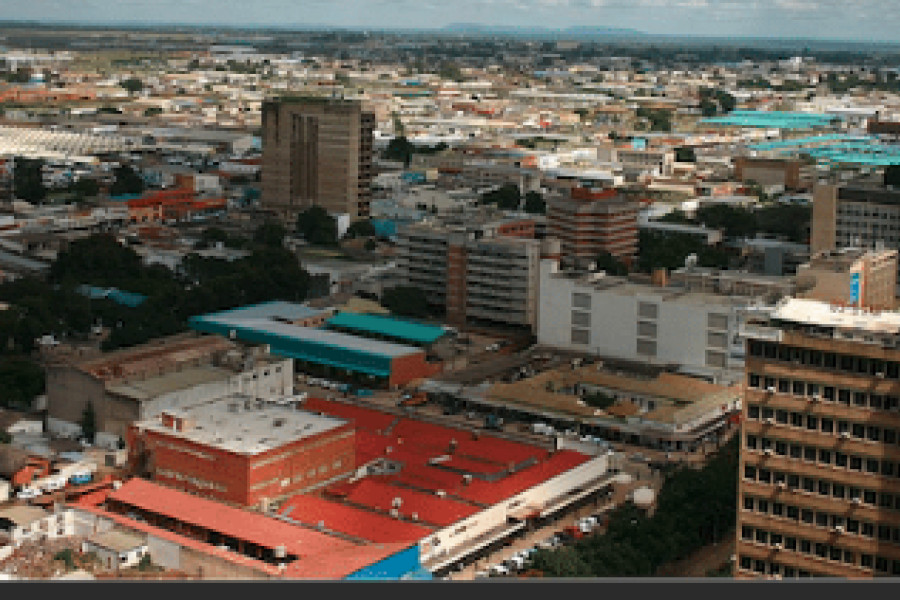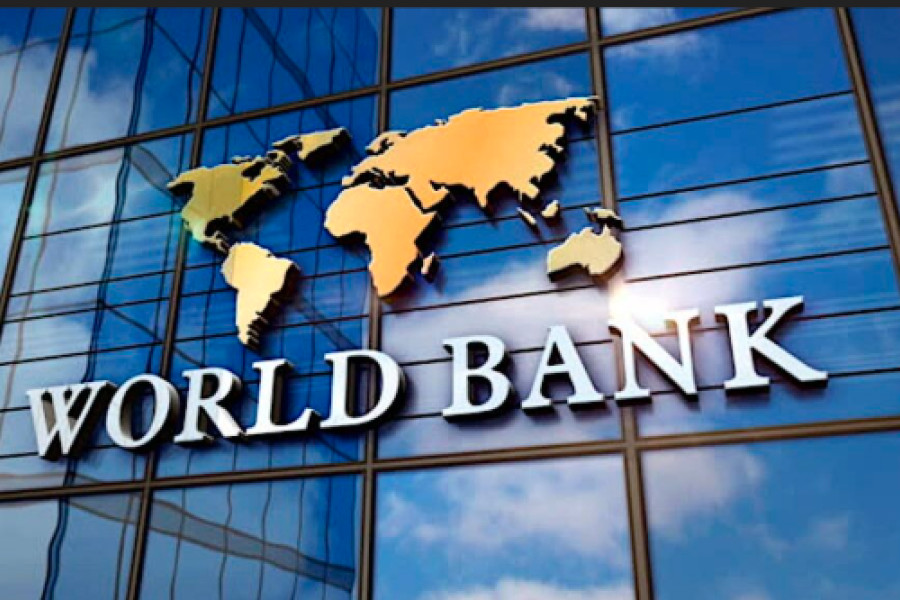
Zambia's Inflation Target: A Potential Turning Point in the Fight Against Poverty?
The recent announcement from Zambia's Secretary to the Treasury, indicating that the nation's annual consumer-price inflation is projected to fall below 8% by the end of the current year (2025), marks a potentially significant milestone. If realized, this would be the first time since 2019 that inflation dips within the central bank's target range. This development warrants a thorough examination of its potential implications, particularly in relation to the pervasive issue of poverty in Zambia. Understanding the trajectory of inflation, its drivers, and the mechanisms through which it impacts the lives of ordinary Zambians is crucial to assessing whether this projected decrease signifies a genuine turning point in the country's fight against poverty.
To fully grasp the significance of this projection, it is essential to contextualize Zambia's recent economic history. The nation, rich in copper resources, experienced a period of considerable economic volatility. A peak inflation rate of nearly 25% in 2021, occurring shortly after Zambia became Africa's first pandemic-era sovereign defaulter, painted a stark picture of economic instability. This period of high inflation eroded the purchasing power of Zambian households, disproportionately affecting the poor who allocate a larger share of their income to essential goods and services. The fact that inflation touched 16.8% this year, even after the peak, underscores the lingering economic challenges, exacerbated by events like the crippling drought that impacted agricultural output and food prices.
Inflation, at its core, represents the rate at which the general level of prices for goods and services is rising, and consequently, the purchasing power of currency is falling. For a nation grappling with high levels of poverty, elevated inflation acts as a regressive tax, disproportionately burdening the poorest segments of society. These households typically have limited savings and less capacity to absorb price increases for necessities such as food, fuel, and healthcare. When prices surge, the real value of their meager incomes diminishes rapidly, pushing them further into destitution.
Conversely, a sustained reduction in inflation, particularly to within the central bank's target range, can have several positive implications for poverty reduction. Firstly, it stabilizes the cost of essential goods and services, providing a greater sense of predictability for households in managing their budgets. When inflation is high and volatile, families struggle to plan and often have to make difficult choices between basic needs. Lower inflation can alleviate some of this pressure, allowing households to allocate their limited resources more effectively.
Secondly, lower inflation can contribute to increased real wages. If nominal wages remain relatively stable while the rate of price increases slows down, the actual purchasing power of wages improves. This means that Zambian workers, particularly those in lower-income brackets, may find that their earnings can buy more goods and services, leading to a tangible improvement in their living standards and a potential pathway out of poverty.
Thirdly, a stable and predictable macroeconomic environment, characterized by low inflation, can foster increased investor confidence. Both domestic and foreign investment are more likely to thrive in a setting where the future value of money is relatively certain. Increased investment can lead to job creation across various sectors of the Zambian economy, providing employment opportunities for the poor and enabling them to earn a sustainable income.
Furthermore, lower inflation can have indirect benefits for poverty reduction through its impact on savings and access to credit. High inflation erodes the real value of savings, discouraging individuals from saving. Conversely, a low-inflation environment can incentivize saving, allowing low-income households to gradually build a financial buffer against economic shocks. Additionally, lower and more stable interest rates, often a consequence of well-managed inflation, can make borrowing more affordable for small businesses and individuals, potentially facilitating entrepreneurship and access to capital for income-generating activities.
The projected fall in inflation to below 8% is particularly noteworthy given the recent economic headwinds Zambia has faced. The sovereign default in 2021 triggered significant economic disruption, impacting investor sentiment and contributing to currency depreciation, which in turn fuels inflation through higher import costs. The subsequent drought further exacerbated inflationary pressures by reducing agricultural output and driving up food prices, a major component of the consumer price index in Zambia. The fact that inflation is now projected to fall despite these challenges suggests that recent policy interventions and global economic conditions may be having a positive effect. However, it is crucial to exercise cautious optimism. While the projection is encouraging, the actual realization of this target and its sustained impact on poverty will depend on several factors:
· Consistency of Fiscal and Monetary Policies: The Zambian government and the central bank need to maintain prudent fiscal policies to avoid excessive borrowing and money printing, which can reignite inflationary pressures. Similarly, a consistent and credible monetary policy framework is essential to anchor inflation expectations.
· External Economic Factors: Zambia's economy remains vulnerable to external shocks, such as fluctuations in global commodity prices (particularly copper) and changes in the global economic outlook. Unforeseen negative developments in the global economy could derail the progress in bringing down inflation.
· Agricultural Sector Resilience: Given the impact of the recent drought, building resilience in the agricultural sector is crucial for ensuring food security and price stability. Investments in irrigation, climate-smart agriculture, and diversification of crops can help mitigate the impact of future weather-related shocks on inflation and poverty.
· Social Safety Nets: While lower inflation can improve the purchasing power of the poor, targeted social safety net programs remain essential to support the most vulnerable segments of the population who may not immediately benefit from broader economic improvements. These programs can provide a crucial cushion against poverty and inequality.
· Structural Reforms: Addressing underlying structural issues in the Zambian economy, such as dependence on copper exports, infrastructure deficits, and high levels of unemployment, is crucial for long-term poverty reduction. Lower inflation can create a more conducive environment for these reforms to take hold and generate sustainable economic growth.
Analyzing the Potential Benefits of Reduced Inflation for Rural Zambians
The positive inflation trends highlighted above can positively affect rural communities. This can range from increased food production, improved livelihoods, and the empowerment of rural northern Zambia. This is all deeply intertwined with the broader economic environment, particularly the stability of prices. While government interventions like agricultural support, education initiatives, and community empowerment programs are crucial catalysts for poverty eradication, a lower and more stable inflation rate can amplify and sustain these positive trends. Here's an analytical breakdown of how reduced inflation could further benefit these villagers:
· Enhanced Purchasing Power for Increased Food Production: Villagers increased food production, a testament to successful agricultural support, which translates to greater income if they sell surplus crops. However, the real value of this income is directly affected by inflation. With lower inflation, the money villagers earn from their surplus will retain more of its purchasing power. This means villagers can afford more essential goods and services for their family (beyond just food), such as clothing, medicine, or school supplies for their seven children. Conversely, high inflation would erode the benefits of their hard work, forcing them to spend more for the same necessities, thus limiting the true improvement in their living standards. Reduced inflation ensures that the gains from increased productivity translate into a tangible rise in real income and overall well-being.
· Greater Affordability of Educational Resources: Students' aspirations for the future are linked to improved economic conditions in their villages. Lower inflation can contribute to this by making educational resources more affordable. If school fees, uniforms, books, and transportation costs rise at a slower rate, families will find it easier to invest in their children's education. High inflation can act as a significant barrier to educational access, especially for low-income rural families. A stable price environment allows families to plan for educational expenses with greater certainty and reduces the risk of these costs becoming prohibitive, thus making Steven's dreams more realistically attainable.
· Increased Profitability and Investment Opportunities for Small Farm Owners: The positive changes in livelihoods for small farm owners are likely tied to better yields, access to markets, or improved farming techniques. Lower inflation can enhance subsistence farmers' profitability in several ways. Firstly, the cost of inputs like seeds, fertilizer, and tools may increase at a slower rate, preserving their profit margins. Secondly, stable prices can create a more predictable market environment, allowing farmers to plan their investments and production more effectively. High inflation introduces uncertainty and can discourage investment due to the fluctuating costs and potential for reduced real returns. A low-inflation environment encourages savings and investment within the community, potentially allowing Sydney to expand his farm or diversify his income-generating activities.
· Sustained Empowerment and Financial Stability for Women: Women's empowerment through new farming techniques and increased yields is crucial for supporting their families. Reduced inflation plays a vital role in ensuring this empowerment translates into long-term financial stability. As women sell their produce, the real value of their earnings will be better preserved in a low-inflation environment. This allows women to consistently provide for their children's needs, invest in their future (like education or healthcare), and build a more secure financial foundation. High inflation can undermine the economic gains from their hard work, making it difficult to escape the cycle of poverty. Furthermore, if the village-based enterprise groups are involved in savings and lending, lower inflation protects the real value of these savings and makes loan repayments more manageable.
The success stories in these Northern Zambian villages, driven by direct interventions, are more likely to be sustained and scaled in a stable macroeconomic environment. High inflation acts as a corrosive force, undermining the impact of development efforts by eroding purchasing power, increasing the cost of essential services, and creating economic uncertainty. Conversely, the projected reduction in inflation can create a more fertile ground for these grassroots initiatives to flourish. It provides a stable platform upon which individuals can build more resilient livelihoods and secure brighter futures for themselves and their communities.
In conclusion, the projection that Zambia's annual consumer-price inflation will fall below 8% by the end of the current year represents a potentially significant step towards economic stabilization. If sustained, this lower inflation environment could have tangible benefits for poverty reduction by stabilizing prices, increasing real wages, fostering investment, and improving the overall macroeconomic climate. However, the translation of lower inflation into meaningful poverty reduction is not automatic. It will require consistent and prudent economic policies, resilience to external shocks, a focus on agricultural development, robust social safety nets, and sustained structural reforms. While this projected achievement offers a glimmer of hope, the true test will lie in the ability of Zambia to consolidate these gains and translate macroeconomic stability into tangible improvements in the lives of its most vulnerable citizens. The journey towards sustainable poverty reduction is complex and multifaceted, and bringing inflation within the target range is a crucial, but not solitary, step in the right direction. The coming months and years will be critical in determining whether this projected decline in inflation marks a genuine turning point in Zambia's long-term fight against poverty.
Related Stories

The Future of Sustainable Development in an Artificial Intelligence Era: Africa’s Path Forward

The World Bank at 80: An Afrocentric Critique of Poverty Alleviation Efforts